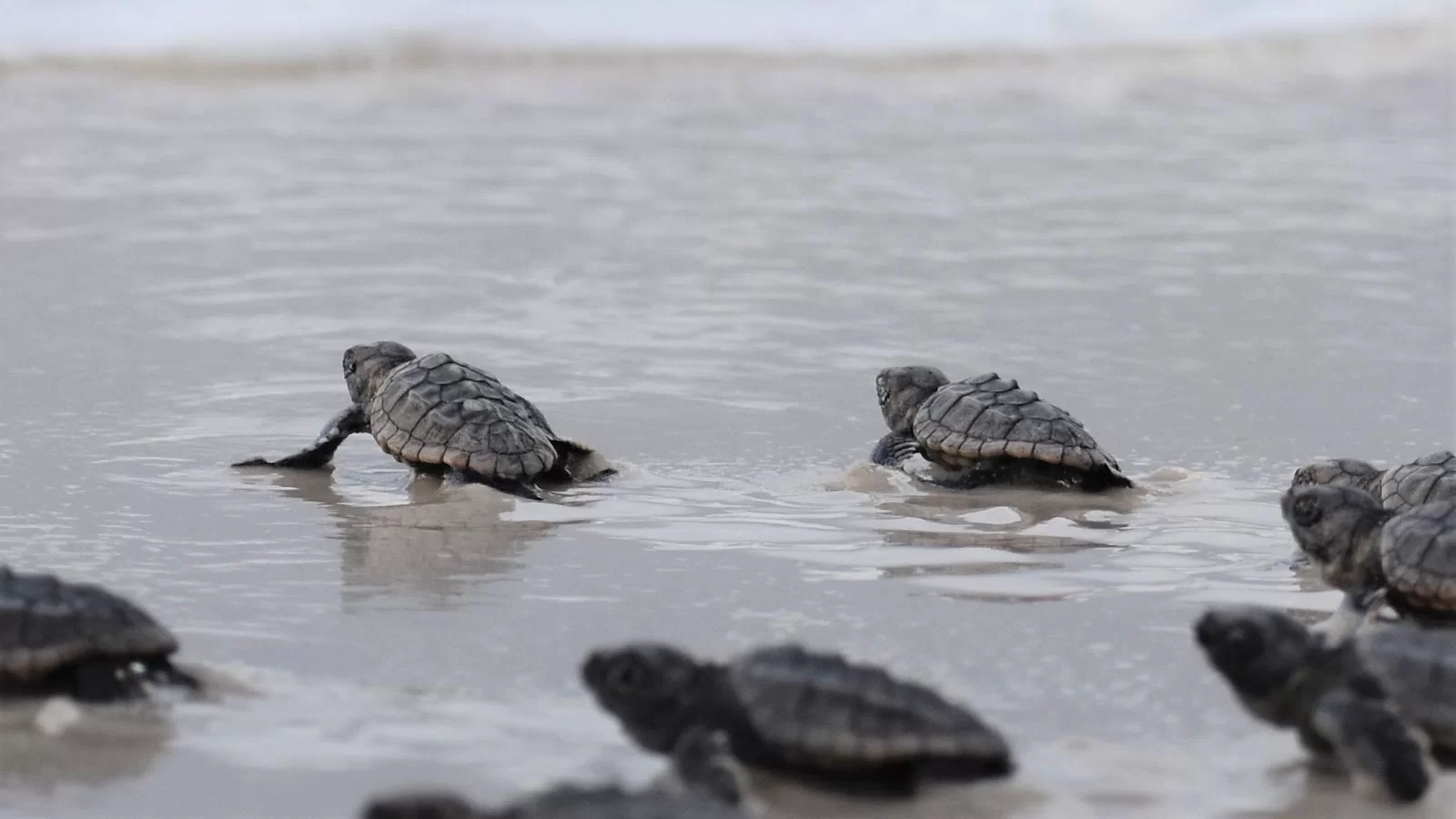For school teacher Krista Ann Sumner few things are more magical than witnessing a baby sea turtle making its first brave trek to the ocean water.
“Watching them swim through the waves and come up for their first breath is the sweetest moment, and it makes me cry almost every time,” said Sumner, who has patrolled the beaches along the Gulf Shores in Alabama as a sea turtle volunteer since 2022. “When you have followed those little turtles from the morning the eggs were laid, all the way to the night they hatch it feels like they really are my own little babies.”
Sumner is one of about 450 volunteers that monitors 48 miles of beaches along Alabama’s Gulf Coast as part of the Share the Beach sea turtle conservation program in Gulf Shores and Orange Beach. Volunteers are split into groups to monitor sections of beaches for Loggerhead, Green and Kemp's Ridley sea turtles during nesting season that runs from May through October.
As a nonprofit, volunteers are the lifeline of the Share the Beach program and for the nesting sea turtles that are fundamental to the broader Gulf Coast marine environment. But the work of the volunteers goes beyond just celebrating a sea turtle’s first breath in the ocean water—it’s an all-in commitment that requires a substantial amount of time and dedication.
“Everyone wants to see baby sea turtles hatch, but they don’t realize the long hours you have to put in to experience it. It’s not as simple as the movies make it seem,” said Sumner. While many beach communities along the Gulf Coast that stretches from Texas to Florida recruit sea turtle volunteers for similar programs, Share the Beach is one of the most successful in the United States. Over the past 20 years Share the Beach has been responsible for the successful protection and release of thousands of sea turtles, and it all comes down to a single factor: volunteers.
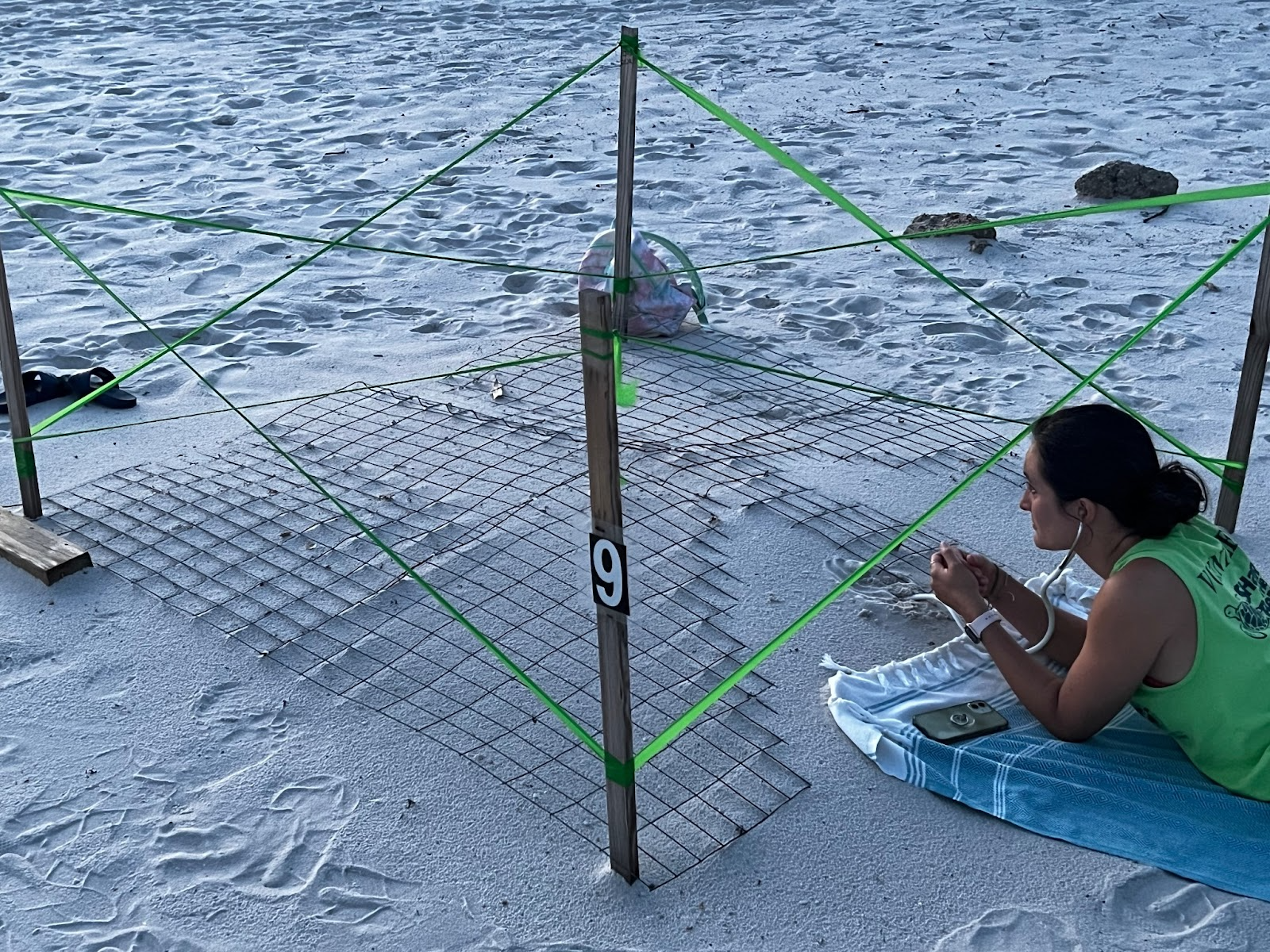
A Share the Beach volunteer is nest sitting listening for the sound of hatchlings. Photo courtesy of Share the Beach
What Sea Turtle Volunteers Do
Only one in 10,000 sea turtle hatchlings ever make it to adulthood to continue the nesting cycle when things like human-related impact are entered into the equation. That means that every nest, egg, and turtle that volunteers monitor is critical.
“Each morning our volunteers text us when they are on the beach, when they find sea turtle tracks and when they are finished surveying their route. Beginning about two months after the first nest is laid, we will also have nest monitoring at night,” said Rachael Holdsworth, East Beach team leader for Share the Beach.
The volunteer cycle happens in phases over a six-month period starting with training, followed by looking for nests and tracks, then monitoring nest and hatching activity and culminating with observing the hatchlings taking their first steps in the sand.
Volunteers are responsible for taking measurements, recording data, and marking the nests they find with posts, flags, signs, and predator screens.
“Our volunteers bury a hydroscope in the sand outside of the nest area and listen for sounds of sea turtle hatchlings breaking out of their eggs and crawling up through the sand. Once we hear the upward movement which sounds like a waterfall, we will schedule volunteer nest sitting,” said Holdsworth.
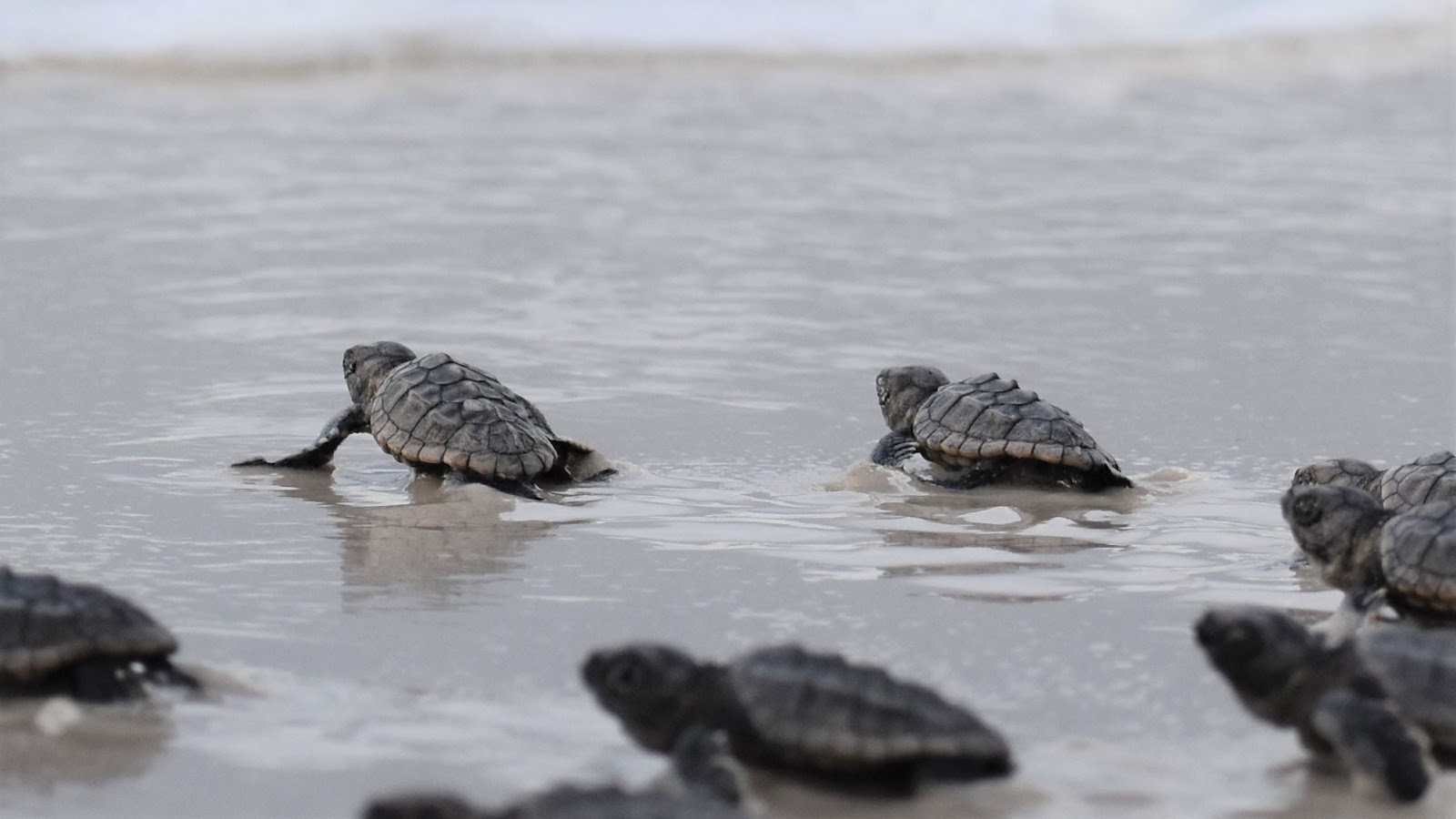
A loggerhead sea turtle nest that boiled after an early morning storm. Photo by Rae Wildlife Photography
Nest sitting continues until the tiny turtles make their way to the surface. Sumner, who volunteers one-to-four hours a week in the spring after her day job as a teacher, ramps up her volunteer time during the summer months when school is out of session. Much of that period is spent just sitting and waiting for the moment that is the most rewarding for volunteers and highlight for the Share the Beach program.
“We protect the nests and help the hatchlings, which increases the number of baby sea turtles out in the ocean, leading to more adults,” said Sumner.
On average, volunteers dedicate two-to-ten hours per week patrolling beaches and monitoring nests with more time spent during the year for education and outreach. This includes talking to and answering questions from curious beachgoers who sometimes get to see nest monitoring in progress.
These volunteer hours add up. In the 2023 season, Share the Beach recorded 27,500 combined volunteer hours. That fluctuates by season with factors like the number of nests and storms in the region.
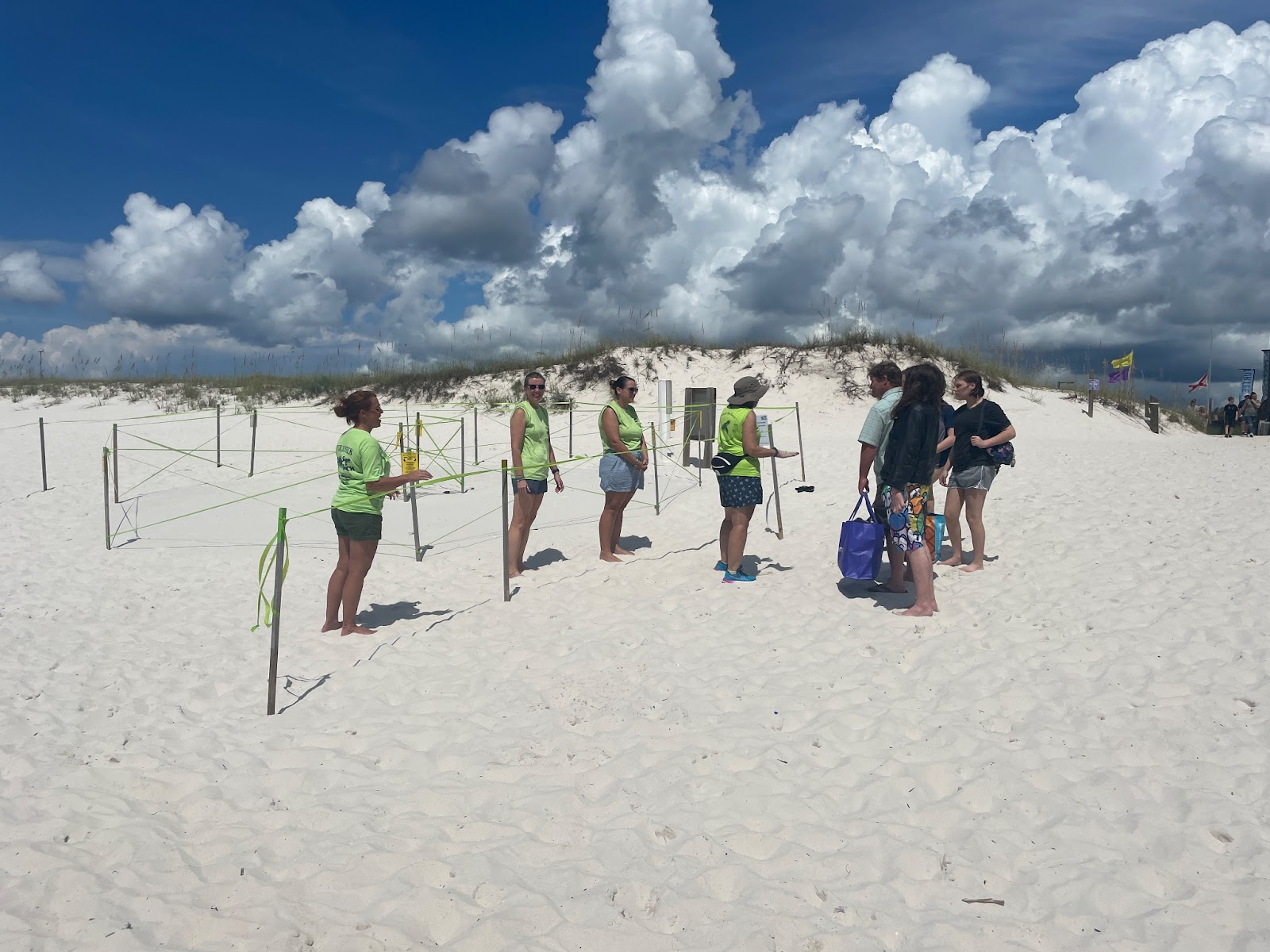
Share the Beach volunteers monitor 48 miles of coastline during nesting season. Photo courtesy of Share the Beach
Sea Turtle Training and Logistics
Sea turtle volunteer training takes place long before the first patrols start on the beaches.
“The first takes place in late April before the season begins and covers how to complete a morning survey, or patrol, to look for new sea turtle activity on the beach, how to identify sea turtle crawls, identify and process a nest, properly mark a nest, and how to relocate a nest if the situation calls for it,” said Sara Johnson, Director and Permit Holder of the Share the Beach program.
The second training happens midsummer when volunteers learn how to monitor nests for hatching activity, what to do when hatchlings emerge, and how to complete a nest assessment or excavation.
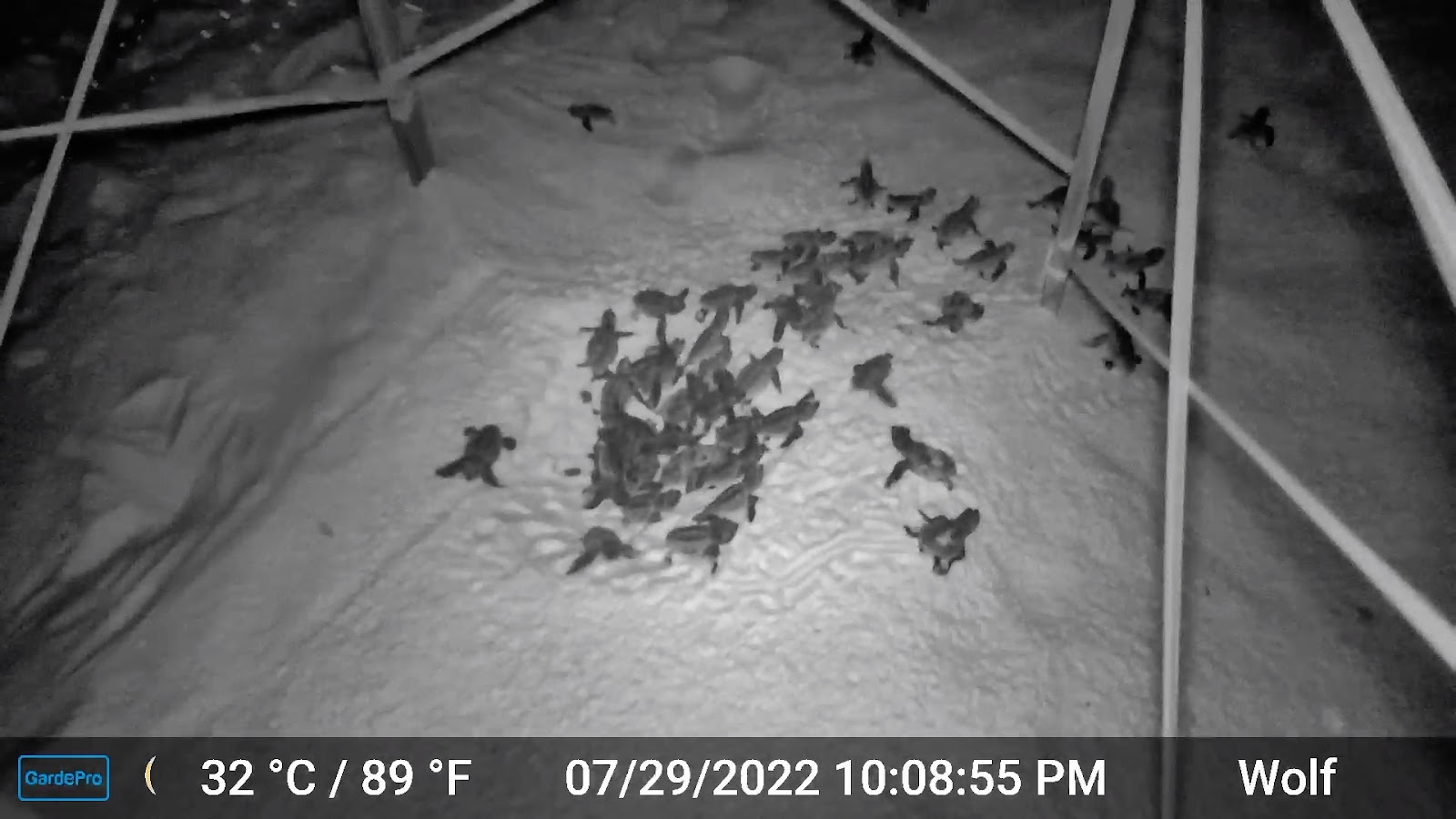
A GoPro nighttime image of new sea turtle hatchlings. Photo courtesy of Share the Beach
During a volunteer’s first season they are paired with an experienced team member to observe and learn as they experience how the training translates into real-time scenarios.
The side benefit to all these volunteer hours is the connections made with like-minded people who share the same passion.“We’re all from different backgrounds and walks of life, but our love for the turtles and our little coastal world really bonds us together. It’s so special to get to know one another during the early mornings and late nights volunteering,” said Sumner.
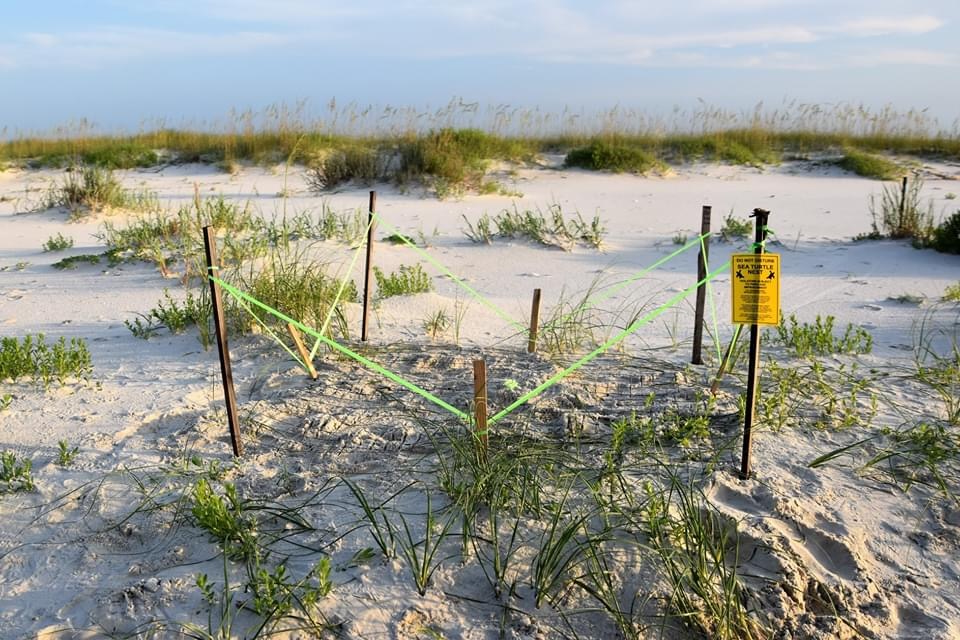
Active sea turtle nests are marked off to protect them during nesting season. Photo courtesy of Share the Beach
Why It Matters
Protecting sea turtles and giving them the best chance of survival has a broader impact on the health of the oceans that many people do not recognize.
“Sea turtles are a keystone species in the marine environment,” said Johnson. “They help maintain healthy seagrass beds and coral reefs, play a role in controlling jellyfish populations, and are, of course, part of the food web in their smaller years. It's not news at this point that losing key species can lead to ecosystem collapse, and our sea turtles are no different.”
An important aspect for sea turtle volunteers is to mitigate the human impact on the nesting process and the hatching sea turtles. This includes limiting their own impact while executing volunteer duties.
“I think the perception is that we help sea turtles in a very active, hands-on way. The reality is that we try to be as hands-off as possible, and we have very strict rules that we follow to achieve this. Our goal is to allow nests to incubate and hatch as naturally as possible, with very little interference from us,” said Johnson.
On rare occasions hatchlings do need assistance to get to the water.
“We will actively collect hatchlings that are disoriented and not making it to the water on their own, but then release them as quickly as possible and still allow them to crawl a smaller distance to the water to promote beach imprinting and strengthening their flippers,” said Johnson.
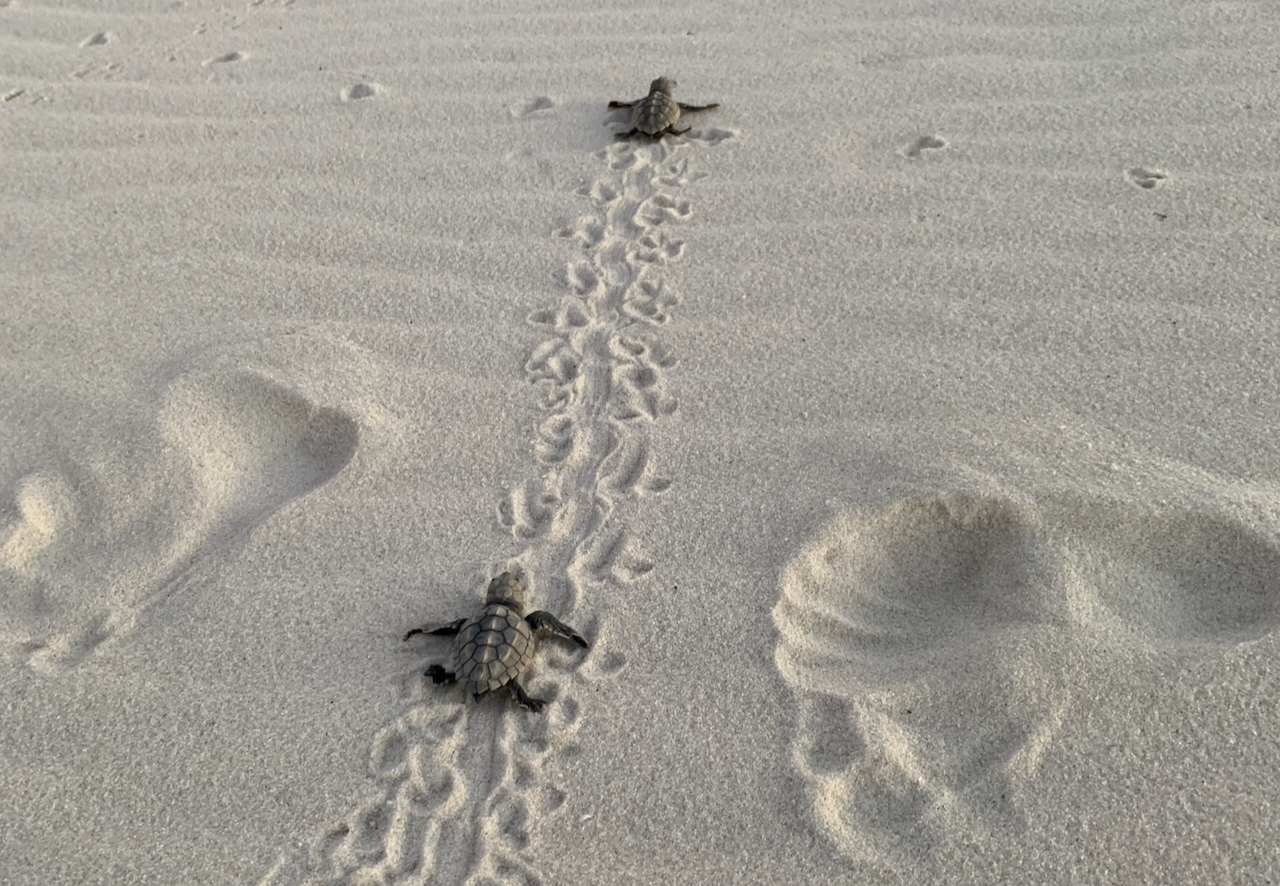
Loggerhead hatchlings making their way to the ocean. Photo courtesy Share the Beach
While Share the Beach volunteers are keenly aware of minimizing their own impact on the young hatchlings, a bigger human-impact concern is beachfront lighting which can cause hatchlings to become disoriented.
There is an ongoing effort between the U.S. Fish and Wildlife Service and beachfront property owners along the Gulf Coast to work together to replace bright white light fixtures with red or amber colored lights which are less disruptive to sea turtle vision.
A third kind of human impact that is not as easy to control is that of curious vacationers who sometimes can’t resist the cuteness of one of nature’s most precious animals.
“Our volunteers locate and mark sea turtle nests on a beach that is packed with people by noon. Marking the nests protects them from human interference while the eggs incubate and develop,” said Holdsworth.
Helping to educate visitors about the sea turtle nesting cycle and how they can aid in ensuring the nests and hatchlings are protected without disturbance is an essential part of the program.
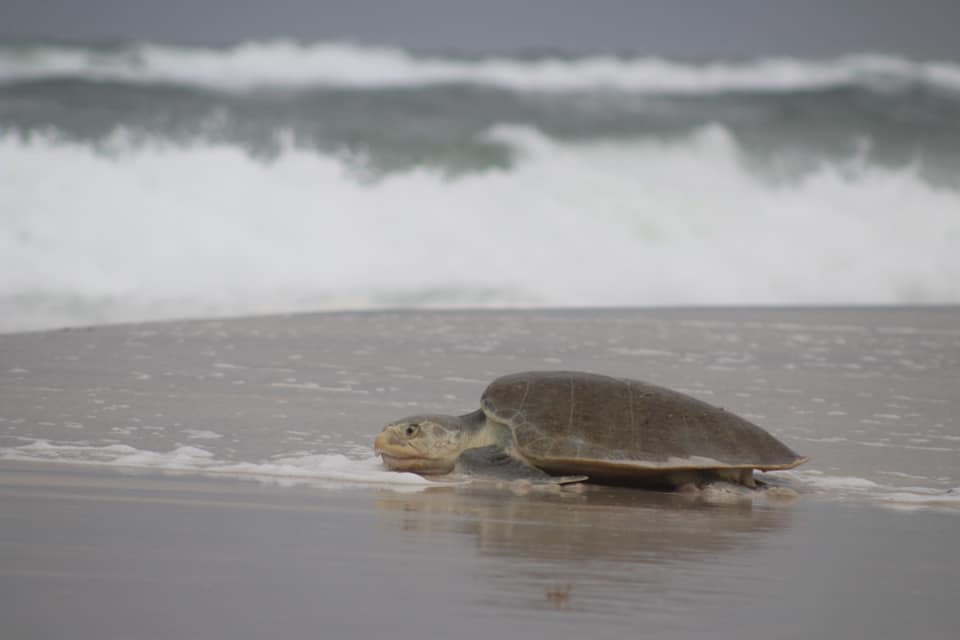
A Kemp's Ridley adult sea turtle on Alabama’s Gulf Coast. Photo courtesy of Share the Beach
How To Become a Volunteer
Most sea turtle volunteering opportunities in coastal communities require that participants live locally given the full seasonal commitment. But even non-residents can play an important role in the process by being mindful of their impact while enjoying the beaches, especially in the evenings and early morning hours.
This can include using sea turtle friendly red flashlights while walking at night, filling in holes that are dug at the beach and calling the local sea turtle hotline if a nesting turtle or hatchling is spotted.
“If you are ever lucky enough to see a sea turtle nesting or hatching, always keep your distance and don’t harass them. We need to be good stewards of our beaches so we can have sea turtle visitors for years to come,” said Sumner.
They say it takes a village to raise a child, but it takes an army of volunteers for sea turtle survival with the gratification of knowing that every hour invested is a donation for the entire marine environment being better protected going forward.
Anietra Hamper is an award-winning outdoor writer, author and lifelong angler who specializes in outdoor adventure and fishing for some of the largest species around the world. Having spent a career as a top-rated television news anchor and investigative reporter, Anietra brings credibility to the stories she covers with her "boots-on-the-ground" journalistic approach. Anietra is based in Gahanna, Ohio.
